Summit Summary & Key Takeaways
The RDSA 2022 Annual Summit provided an opportunity for federal, state and local government, industry and business to better discuss the housing and workforce issues in our regions.
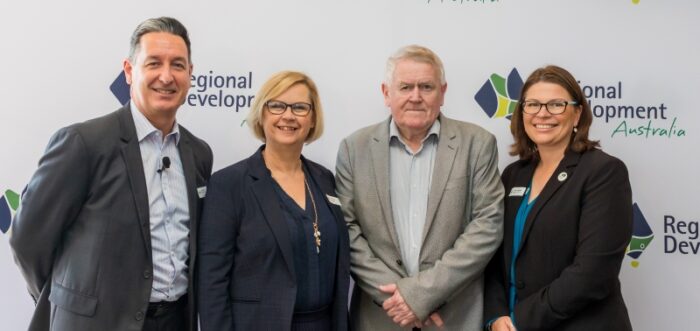
Hon. Rob Kerin Chair Regional Development SA, Jodie Hawkes Chair RDA Murraylands & Riverland
More than 120 attendees attended the RDSA 2022 Annual Summit, held 13 September 2022 at the Bridgeport Hotel, Murray Bridge, with another 20 joining via live stream. The day started with a highly engaging Welcome to Country presentation from local Indigenous artist, Ngrakani (Harley Hall).
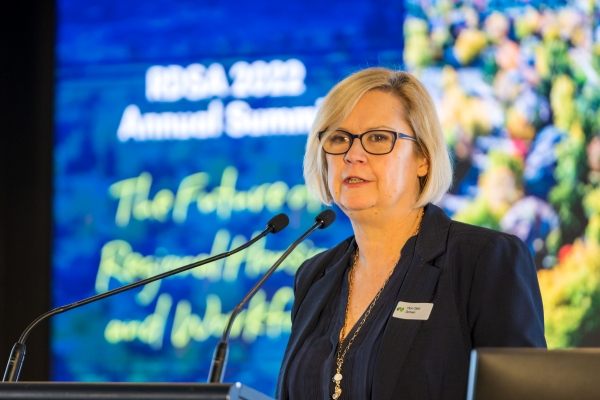
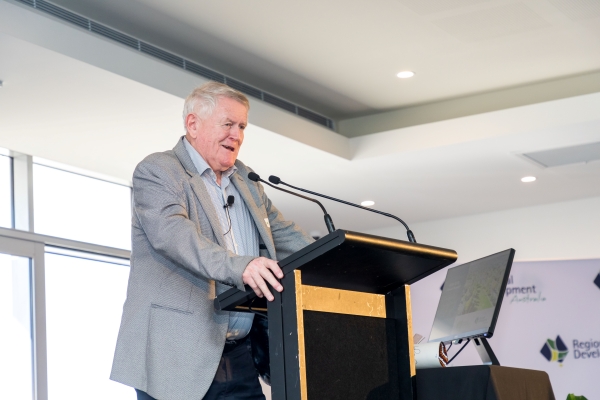
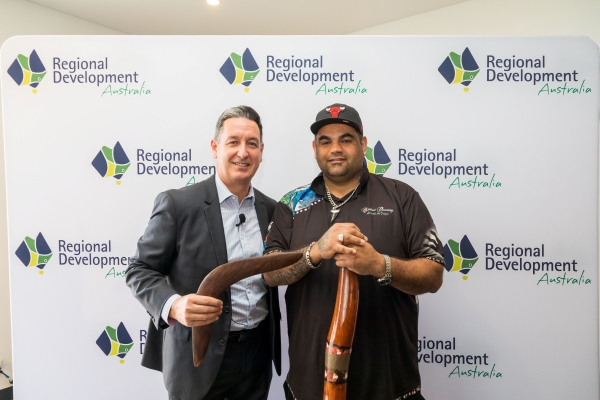
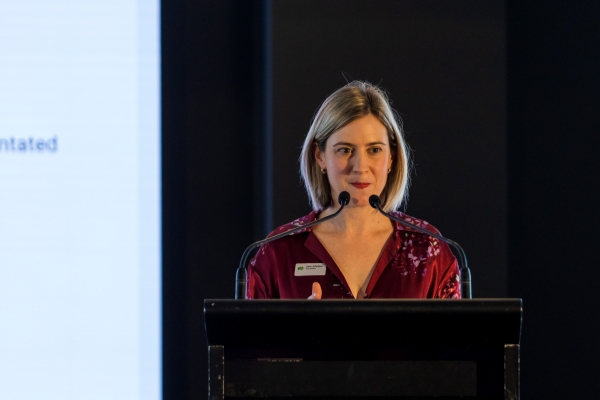
CEO StudyAdelaide
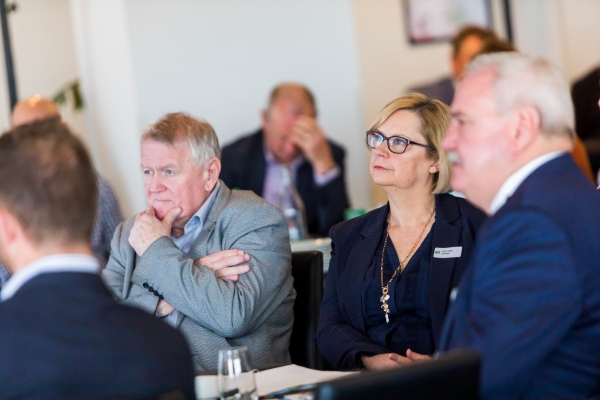
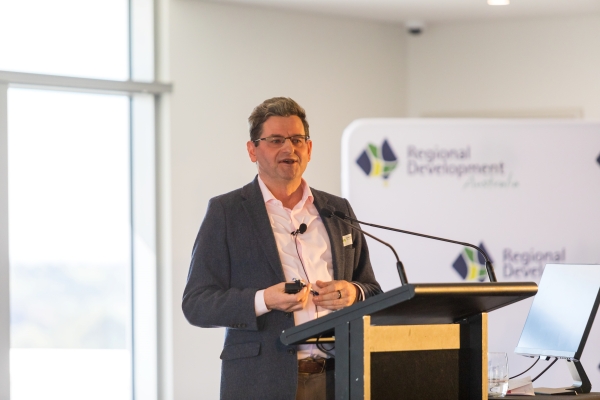
CEO RDA Limestone Coast
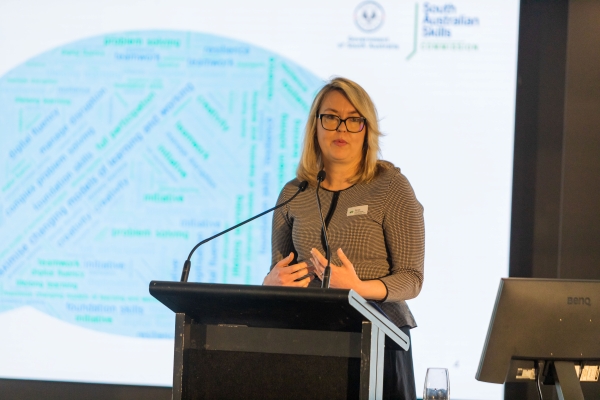
SA Skills Commissioner
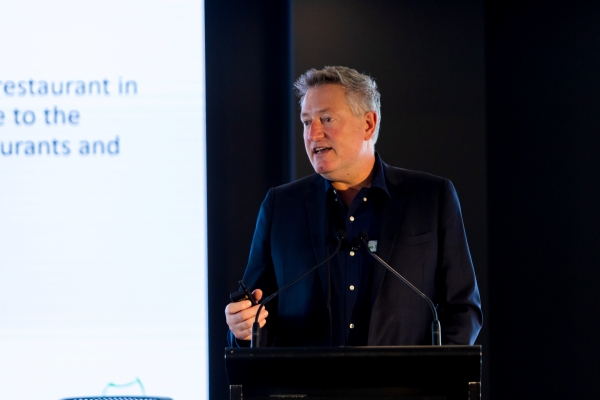
CEO Migration Solutions
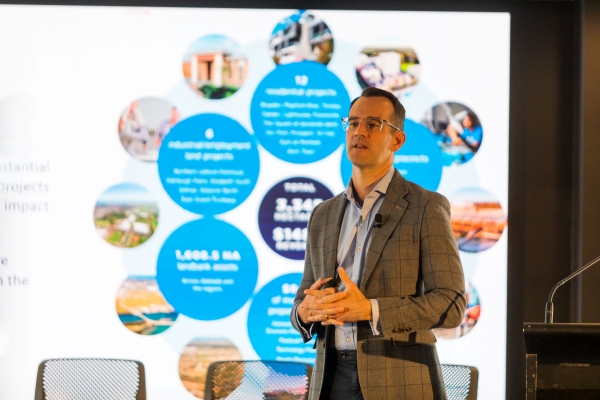
CEO Renewal SA
Ministerial Opening Address
Hon. Clare Scriven MLC: Federal Minister for Primary Industries & Regional Development and Minister for Forest Industries
The Minister acknowledged there has been a 23% decrease in rental accommodation and a more than 30% increase in home values in regional South Australia. To help address these issues in the short to medium term, the South Australian State Government has committed $177 million over 4 years to build 400 new public houses, with a further 350 existing vacant homes to be renovated and brought up to standard and 3,000 homes to undergo general improvements.
A bilateral funding agreement between the Federal Government and South Australian government will also see a focus on skills training, with two new regional technical colleges being built in Mount Gambier and Port Augusta, and a further three technical colleges to be built in Adelaide.
Other areas for focus included providing the support and infrastructure needed to help more people with disability, women, younger and older Australians into the workforce.
Keynote Speaker Address
Hon. Rob Kerin: Executive Chair Regional Development South Australia |
Former South Australian Premier
This brief address to the room confirmed the RDAs’ commitment to collaboration and supporting our regions to thrive.
Case Study – StudyAdelaide and RDA Limestone Coast
Jane Johnston: CEO Study Adelaide
David Wheaton: CEO RDA Limestone Coast
Jane spoke on the engagement they’re doing with international students, and the tours provided within the regions to introduce students to our regional employers and the lifestyle our regions have to offer.
Over the past 16 months, some 1,500 students have registered with StudyAdelaide, with 250 students heading to the regions across 8 tours. These tours have already resulted in some of these students relocating to our regions to live and work.
David explained the role our regional RDAs play in connecting business and employers to these programs and helping them to succeed. Part of the challenge of attracting migrant students to regions is the misconceptions they have about what regional Australia has to offer.
The StudyAdelaide tours are invaluable in helping break down those misconceptions by facilitating face-to-face connections between students and employers, but without the regional RDA Workforce Programs helping drive the program, these connections could not be made.
Case Study – Workforce and Leadership, RDA Barossa
Anne Moroney: CEO RDA Barossa. Gawler, Light, Adelaide Plains | Renewal SA Board Member
Bridget Kennelly: Executive Support (People & Projects) RDA Barossa Gawler, Light, Adelaide Plains
Anne and Bridget explained the importance of our community volunteers in supporting programs to drive local communities via the unpaid workforce. The Workforce and Leadership Programs offered by regional RDAs aim to expand the pool of current and future leaders in regional communities, helping to reduce the risk of volunteer fatigue by those who often take on the heavy lifting.
The programs also remove barriers to volunteering by helping create greater understanding around governance, which can often be seen as too complex or confusing for the average person.
Case Study – Riverland Agricultural Workforce (RAW) Program
Ben Fee: CEO RDA Murraylands and Riverland
Ben followed on to provide insight into their Workforce Program and reiterated important role RDAs play in regional communities to connect people with various programs and support. He highlighted the number of RDS staff and board members in attendance at the Summit and encouraged attendees to seek them out and build connections.
Jobs of the Future
Renee Hindmarsh: South Australia Skills Commissioner
The Commissioner introduced the audience to global workforce megatrends, which will see a move away from manual labour and jobs requiring more physical work, to those that will require a higher level of cognitive skills and education.
She surmised that our greatest workforce challenge is helping current and future generations gain the skills they need to enter, or transition, into these emerging fields. Studies indicate the human skills future jobs are most likely to require will be:
- cognitive
- digital
- personal/self-development
- leadership
- adaptability
- collaboration
- analytical
As a result, it’s predicted that within the next 5 years at least 9 out of 10 jobs will require a post-secondary qualification, with healthcare being the dominant employer in both regional and metropolitan areas.
It is therefore critical to ensure our regions have access to higher-level education to not only future-proof our future workforce by providing the skills and education they need, but also ensuring regional areas remain an attractive and feasible locations for people to live and work.
Migration – Place Based Solutions
Mark Glazbrook: CEO Migration Solutions
Mark examined the disconnect between migration into Australia and South Australia’s share to fill workforce shortages. While program numbers have increased from 160,000 to 195,000, almost 500,000 job vacancies remained in May 2022.
South Australia only accounts for 2.4% of all migrants coming into Australia under the 482 visa program (replacing the 457 visa). Mark suggested this has been due to a change in programs to focus on skilled migrants with employment prearranged prior to travel, from migrants being invited to work based on current skills demand.
As a result, many skilled migrants are moving to mainly larger metropolitan areas where there is a greater proportion of skilled employment available, while smaller cities and regional areas struggle to find the support they need from these programs.
With regional areas struggling to fill workforce gaps, he submitted it may be time for the migration program to review the efficacy of the supply driven model. An increase in migration numbers would also boost economies and create additional jobs in local communities, with data indicating that for every 1 demand driven job taken up by a migrant, 1.6 additional jobs and training opportunities are created for local residents.
Panel Discussion – How Do We Fix Skills Shortages?
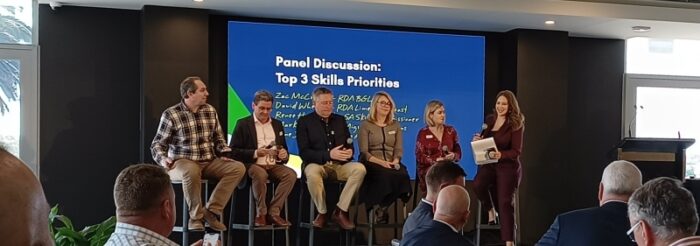
Some of the key points from this discussion included whether the RDAs may have a role in migration reform to add “more layers” to the definition of “regional”. With some visa programs designed to fill skills gaps in more remote regions, those regions closer to the metropolitan areas are at risk of falling through the gaps in filling workforce shortages with migrant workers.
Fast-tracking migrant visas into regional areas and fast-tracking permanency could be beneficial to get people into jobs now – businesses can’t wait months or years to find people to fill roles.
There is greater need to ensure training into the jobs of the future and support for people with disability in the workforce.
Regional Australians also need better access to services that might only be readily available in metro areas to attract and keep people living in regional areas. This included services such as education, healthcare and childcare.
People were reminded to reach out to their local RDA for help with making connections to government and industry programs.
The Commissioner for Skills SA reminded people to check their website to find a range of free support.
Housing and Accommodation
Chris Menz: CEO Renewal SA
Chris provided a presentation on Growth and Leadership Through Property and Projects. He acknowledged that housing had been an issue well before COVID -19 and that Renewal SA were making regional South Australia a focus to identify housing priorities. Forward planning was also flagged as critical to accommodating future demand.
In some areas, the addition of 10-20 new homes may be all that is required to meet the accommodation needs, achieving significant outcomes with small increases to housing stock. Chris then outlined the 5 ways affordable housing is facilitated, which encompassed:
- mandated affordable housing
- government initiative schemes
- existing rental stock
- direct development
- structured development and finance deals
Panel Discussion – Solutions for Housing in the Region
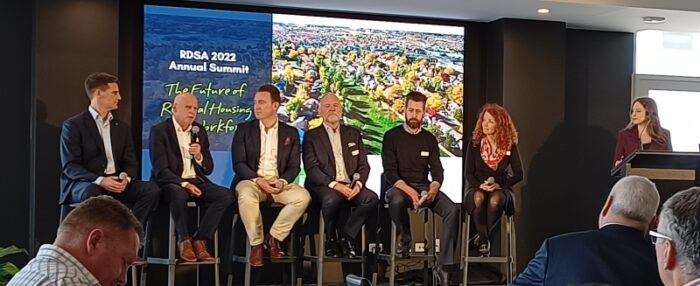
Key points for this discussion included the cost for various housing options, including passive buildings and consideration for modular accommodation that could be expanded, contracted or repurposed to meet the shifting needs of communities.
Specific government-owned accommodation for workers was raised as a way to avoid the need for people entering/leaving areas for employment to rent or purchase homes in the private market, particularly in areas where shortage of accommodation is at crisis level.
Housing density was once again raised to suggest that higher density accommodation (such as apartment living) need not be a bad thing for regional communties when well-designed.
Roadblocks and red tape also needed to be reduced to allow immediate release of available residential land for development. Additionally, housing demand needed to be correctly identified to ensure the correct solutions were being implemented in the right areas. It was also acknowledged that there are currently capacity issues in the building sector to enable construction of new homes.
It was suggested council audits be conducted to identify available, liveable housing stock currently unoccupied and ways to incentivise property owners to make homes available for immediate use. Stamp duty reform was also discussed as a way to make home ownership more affordable.
Find full agenda and speaker presentations here.
